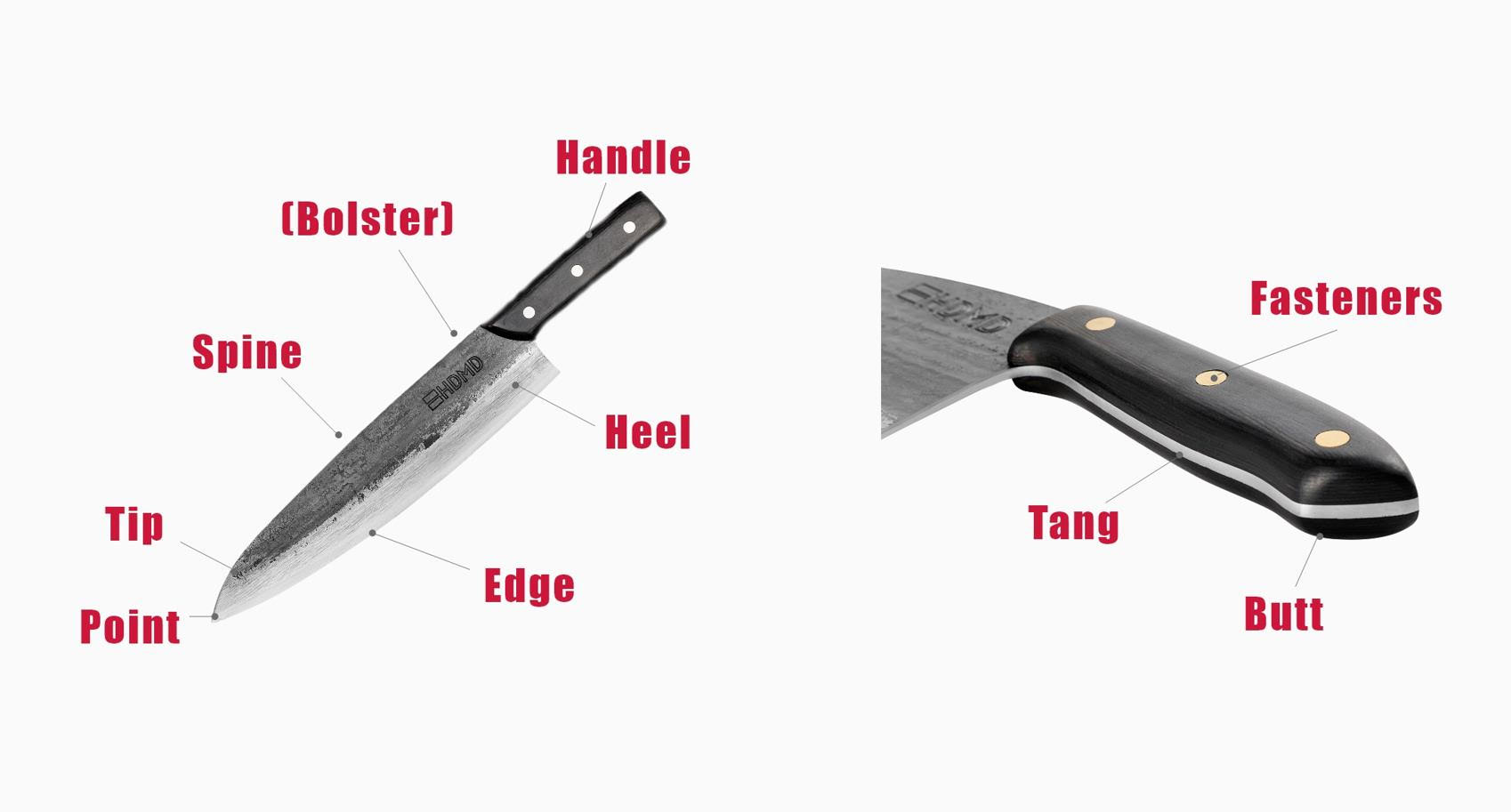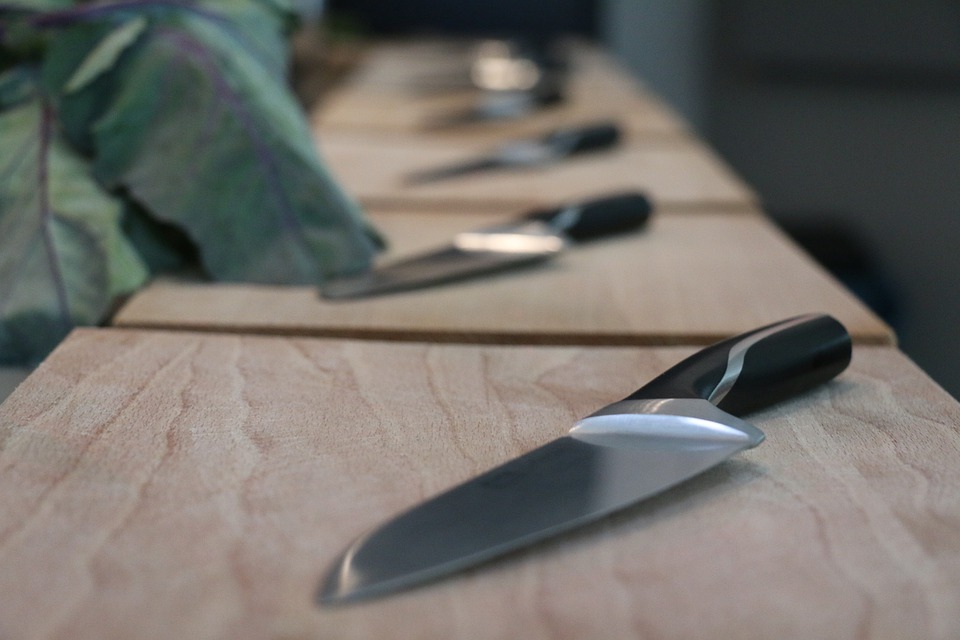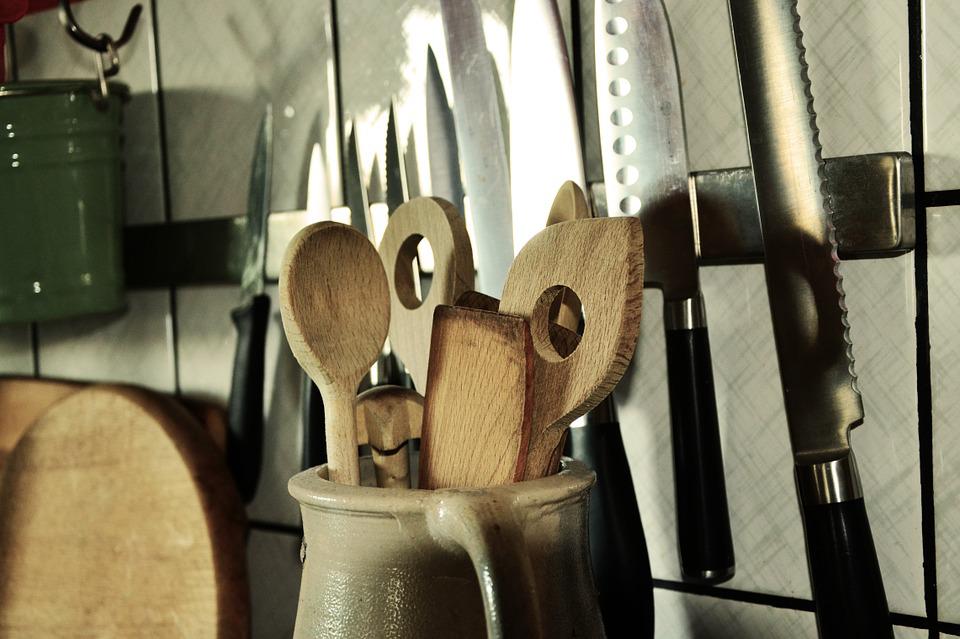Getting to grips with the size of your kitchen knives, which sizes you should own, and how to measure a kitchen knife correctly can all seem frighteningly complicated.
This article’s going to show you how to measure a kitchen knife like a pro and give recommendations and advice on knife size and measurement in a more general sense. All very helpful to know, so let’s get cracking!
Table of contents
Why is kitchen knife size important?
If you’re anything like me, you like to know the WHY of things. If I’m going to get all of my kitchen knife beauties assembled and start getting mathematical into the bargain, I’d sure like to know why I’m doing it.
Here are some points to consider about knowing the size of a kitchen knife:
- You need a knife that’s comfortable for your hand. If a knife is too big or small, it won’t perform well, and you won’t enjoy using it. A specific knife size is made for a specific purpose in the kitchen: by knowing the size of the knife you can use it for the jobs that it’s intended for
- Storage. Want to build or buy a new knife block, knife carrier or knife display? You need to know how big your knives are to choose or make the item correctly so that everything fits!
- Finding your preferred kitchen knife size allows you to shop wisely according to what suits you, not according to what’s recommended by generalist retailer sites
Right. Now that we understand the why, let’s look at the what of kitchen knife measurement.
Does kitchen knife size include the handle?
There is not a correct way of measuring a knife, but the more accepted way does not include the knife handle. The knife size was measured from the end tip of the blade (point) up to where the blade meets the handle (the end of the heel).

How to measure the blade length of a kitchen knife
You will need: a tape measure or accurate ruler that shows inches, pen and paper, and the knife that you aim to measure.
- Place the knife on a flat surface in front of you, making sure it’s horizontal i.e. the length of the knife runs across your body from hip to hip.
- Ensure that the knife is placed level in orientation by aligning it precisely with a straight edge, like the edge of a table that is itself placed straight and level.
- Place the ruler or run the measuring tape along the blade of the knife, measuring from the tip of the blade to the end of the heel where the blade meets the handle.
- Bring your head down to the ruler or tape level to avoid eye – line errors.
- Note your measurement down and round it up to the nearest eighth of an inch.
- Repeat steps 3 and 4 to confirm that the first measurement noted down is correct. If the figures differ, measure a third time to ensure complete accuracy and note this measurement down.
Tip: it’s helpful to photograph the knife next to its noted measurement so that you have an easily accessible record for future reference.

How to measure the handle length of a kitchen knife
The handle section of your kitchen knife should be quite clearly defined from the blade and is easy to measure by following the process outlined above.
- Again, make sure that the whole knife is aligned correctly along a straight edge.
- Bring your head down when noting the measurement to ensure accuracy.
- Double check your figures, not forgetting to round up the nearest eighth of an inch.
- Make an easily accessible written/photographic measurements record of your knives for future use or insurance purposes.
How to read a kitchen knife product description correctly
When purchasing online or even in store in some cases, the label of the knife or its product description will either mention one measurement or two. If the description only has one figure, it’s likely for the blade measurement only.
If the knife measurement is subdivided into two figures, this means that one measurement will be for the blade, and one for the handle. The seller or site should identify the two measurements clearly in their description, but if you’re in any doubt, contact the site sales team or the store owner and ask for clarification.
If they’re unable or unwilling to give you accurate product information, you’d be wise to shop elsewhere as it doesn’t say much for their customer support!
What’s the best size for kitchen knives?
We want to repeat that a kitchen knife should be suited to your hand and strength. Any knife you buy should be comfortable and well weighted and balanced in your hand to be a pleasure to use.
The forearm measurement technique
To judge the suitability of a chef’s knife against your body size, you can measure the knife blade (heel to tip) by laying the chef’s knife along your forearm (gently!) with the heel or bolster of the blade laying on your wrist and the length of the blade extending up towards your elbow.
A knife well sized for you personally should cover the whole area from wrist bone to elbow without exceeding it.
The most widely used and common chef’s knives today are around 8 inches in blade length, but kitchen knives come in a variety of sizes suited to their function.
Handpicked for you
True cutting power in the palm of your hand
Short vs long kitchen knives – what you need to know
Let’s use a table here to give you the low down at a glance!
| TYPE OF KNIFE | PURPOSE | PROS | CONS |
| Short – usually 6 to 8 inches blade length. Examples: paring or utility knives | Chop, slice, and dice softer and smaller items | Easy to control, good precision and can be used in small spaces | Can’t be used on large or very hard foodstuffs |
| Long – usually 8 to 14 inches blade length Examples: ham knives or chef’s knives | Cutting & chopping hard and larger items | Suits large hands or user familiar with knives, great on tough jobs | Require some effort to use and unwieldy in small spaces or on small/delicate items |
Our top tips for choosing the right kitchen knife size for you!

- You should own a standard chef’s knife (around 8 inches) because it will be your kitchen’s multi tasker.
- Buy the knife that fits your hand and your budget comfortably.
- Organize your knife collection from big to small and check that you have a knife that covers all your usual kitchen functions. For example if you don’t eat or serve meat, you can get away without owning a large carving knife
In conclusion
This article has aimed to simplify and explain knife measurement, why it’s important to you as a knife user, and getting the right size kitchen knives for both your body and your knife collection.
We hope that you’ve enjoyed this article and look forward to seeing you again in our blog section where you’ll find so many information rich articles on kitchen knives, knife skills, cooking, recipes and so much more!












